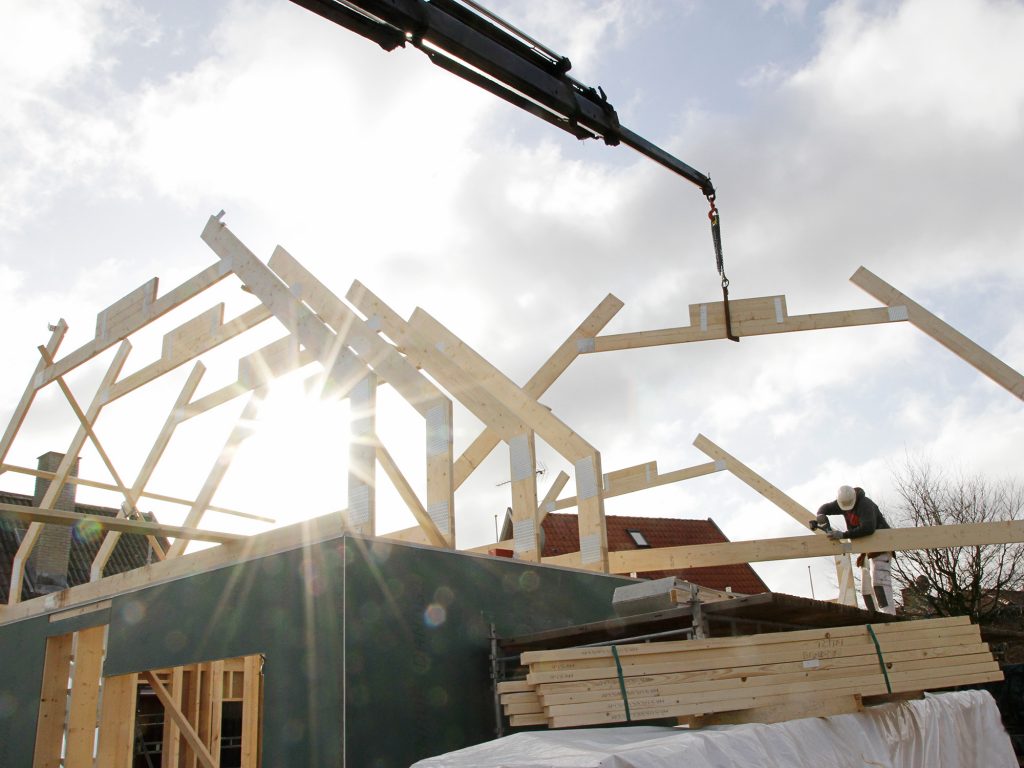Building a house involves countless decisions, but one of the biggest choices must be made well before the slab is poured – to build in an estate or an established suburb?
Simon Pressley, head of property market research for Propertyology, says people building themselves a home have a different set of priorities to investors looking purely at the bottom line.
The key to making the right choice, he says, comes down to understanding the pros and cons of each and weighing them up, based on personal circumstances.
The pros of building in an estate: Affordability

Building? It can be hard to work out which site will suit you best. Picture: Getty
Generally speaking, land in an estate is cheaper than that in established, built-up suburbs, Pressley says, so affordability is the “biggest and most obvious” advantage.
“It’s simple; land on the fringes of the urban footprint of a larger centre is going to be more affordable than land close to the CBD, which is why estates appeal to buyers, especially first-home buyers,” he says.
Estates also offer a way to get a foothold on the property ladder.
“For some first-home buyers, an estate might be the only option and it’s better than nothing. Some people decide to save their pennies, to try to get into an established suburb, but you may be forever chasing the market if you’re not careful.”
Set cost & streamlined process
The set designs and “all-inclusive” cost of building in an estate appeal to many, Pressley says.
“As long as you understand the fine print about additional costs, if something goes wrong with a build in an estate, generally speaking it’s not your issue, which is a good position to be in.”
The process of building in an estate is also streamlined, Pressley adds.
“Building a home can involve what seems like thousands of decisions when it comes to design, fittings and fixtures, which some people like and some people don’t. In an estate, you’re tapping into the expertise of the developer to get the house you want.”
Open space & green credentials
Many new estates focus on providing open space and “green” design, Pressley says.
He says for those who value open space, a master-planned estate can be more enticing than a cramped suburb.

Many new estates build parks and other recreational areas for residents. Picture: Getty
The large playgrounds and man-made lakes often included in modern estates are hard to find in established areas, he adds.
“When you look at something like using solar power, it can be very complex to understand yourself, but some estates approach this now, where every dwelling in the estate benefits from green technology.”
Price growth
If buyers hit the “sweet spot” of a quality estate that’s accessible to employment options, in an appealing, affordable area, there is potential for future price growth – the holy grail of real estate.
Pressley says buyers need to understand the effect supply has on property values though.
The cons of building in an estate: Distance
With most new estates on the urban fringe, proximity to employment options, schools, sporting grounds, amenities, shopping centres and other facilities can be an issue, Pressley says.
“Distance to employment options is a big one. If there are no major employers nearby, who might want to buy the property in the future?” he asks.
“With things like shopping centres, the developer may promote a major supermarket will be built, but you need to consider when this will happen and if this is even where you want to shop. You need a range of amenities close by, it’s essential,” Pressley says.
Builder search: Find the right builder
Oversupply & the bottom line
“Given that supply is a growth suppressant, you need to realise that if there’s lots of other available land around an estate, more land will be developed, and that will impact prices, so looking closely at supply is vital,” Pressley says.
“No matter which part of the country you’re in, you want a healthy construction industry and things happening in your area, as that creates jobs and keeps cash registers ringing, but there is a tipping point when you hit oversupply.”
Homogeneous homes
Estates are often accused of being boring, design-wise.
Pressley says while buyers like the “work being taken out of the process” by picking from set house designs, it can lead to many similar properties in close proximity. This, in turn, can make it hard to differentiate a property when it comes time to sell.
Due diligence required
“You really need to do your due diligence on the developer and the building company building your house in an estate,” Pressley says.
Don’t fall in love with an estate without running a ruler over all parties involved, he says.
The pros of building in an established suburb: Existing value
“In an established suburb, you have evidence of value all around you. You can directly compare what you are planning to build to what similar properties nearby are worth. That’s invaluable,” Pressley says.
“It essentially means you can ensure you don’t over-capitalise when you build a house. You know what it’s going to be worth – and also what the potential for growth is, because you have historical data to draw on,” he adds.
Proximity to employment & amenities

Buyers value being close to shops, transport and other lifestyle amenities. Picture: realestate.com.au
Established suburbs come ready-made with existing employment hubs and amenities, making a future life easy to plan for. It also creates a ready pool of potential buyers.
Control
“Obviously when you’re building a single house on a block in an established suburb you have full control of the product. You don’t have to deal with a developer or estate rules,” Pressley says.
The cons of building in an established suburb: Cost
“The cost of buying into an established suburb is obviously the biggest con,” Pressley says.
In an established area, buyers often have to knock down an existing property to build new too, adding extra cost and complexity, he says.
Site & town planning challenges
In an established area, site and town planning challenges can be many and varied and cost time and money, Pressley says.
“In an estate, a developer has the hassle of dealing with all the day-to-day hassles,” he says.
“They deal with getting plans approved by council, with sewerage, power lines, if a crane is needed, if a street needs to be closed for the crane to get access, getting permission for that and so on. Even if you palm off this responsibility to someone else, you still ultimately end up having to deal with it and it can be a pain,” he says.

Costs can quickly add up for a build in an established area. Picture: Getty Images
In an estate, there is a “clean slate” to work on, Pressley adds. There can often also be more constraints on design too.
“Each neighbourhood has its own rules around character and any new home in an established suburb has to fit within that.”
Budget blow-outs
“There is always greater potential for cost blow-outs in an established area,” Pressley says.
“Things are not so clean cut with costs when you’re on your own.”
Whether it’s access to services, finding unexpected nasties on-site, late design changes or compromises forced by town planning, additional costs can quickly add up.
“And it all comes down to you.”




